Galveston's Tall Ship Elissa - June 1st, 2009
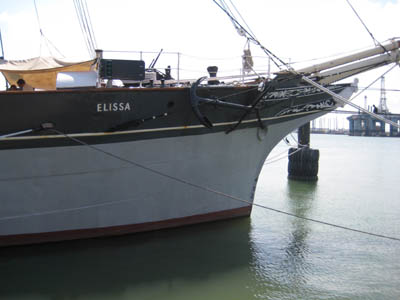 Visit the Elissa at 22nd St. & Harborside Dr. |
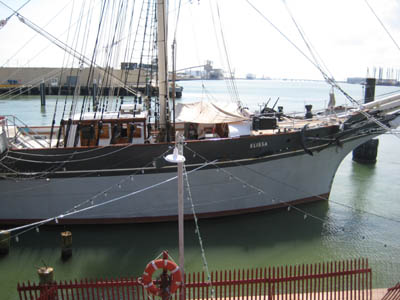 Elissa is an 1877 Iron Barque (riveted iron hull) |
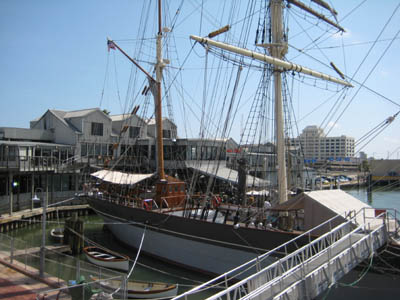 She was rescued from a Greek scrapyard in 1968 |
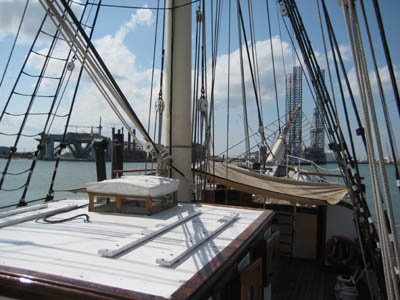 Come onboard and overlook the galley & bow |
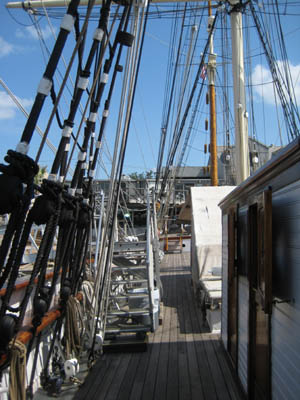 Look back toward the stern and entry gangplank |
 Texas Seaport Museum is still under repair since Ike |
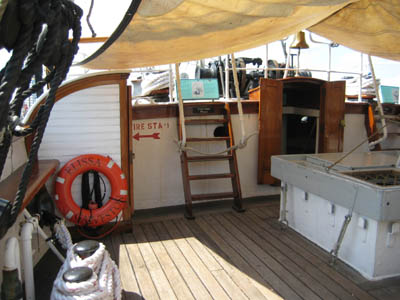 Entry to the forecastle above stowed flammables |
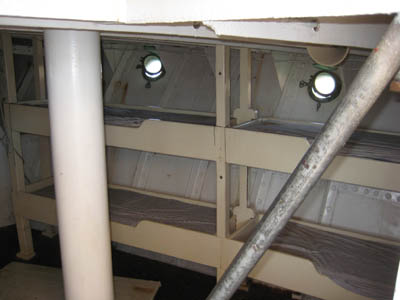 Eight able bodied seamen slept in the forecastle |
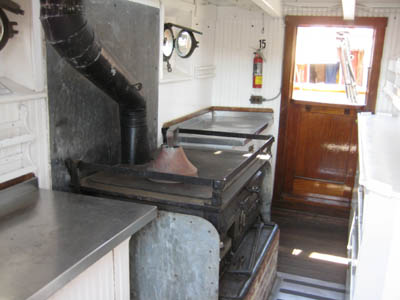 Wood burning iron stove in the Galley |
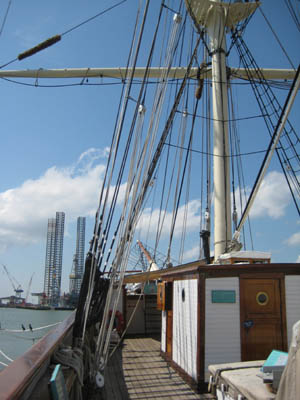 Donkey room (& engine) in the back of the galley |
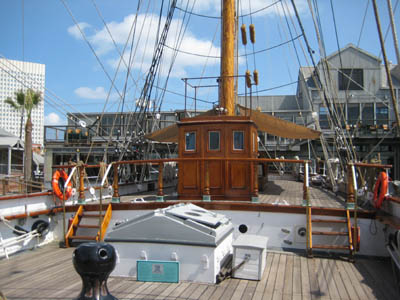 Black capstan helps pull heavy lines for the sails White box provides light & venting for the aft hold |
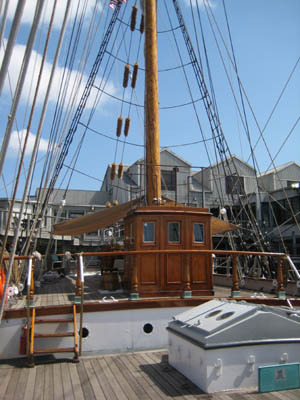 The charthouse (installed 1986) holds electronic navigation and communication equipment |
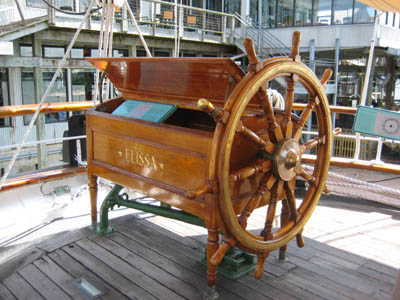 The ships wheel is at the stern above the rudder |
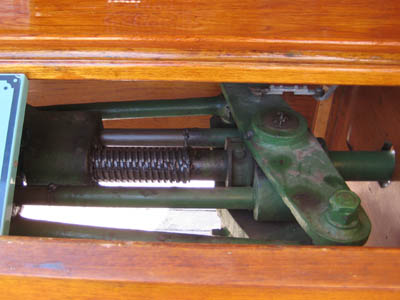 Steering gear housed in the wheel box |
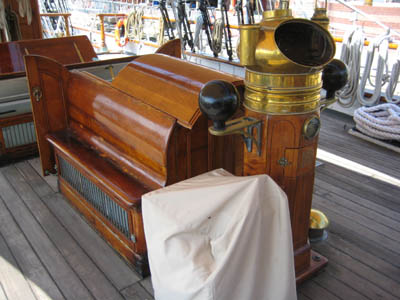 The binnacle houses the compass & navigation oil lamps. The captain's companionway is the large box, allowing one at a time access to his cabin |
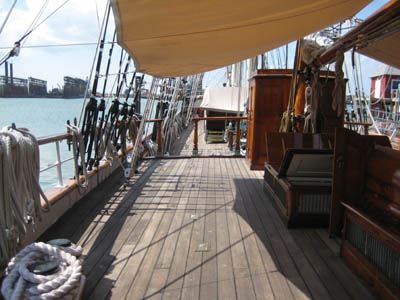 Portside view, stern to bow. The skylight (between companionway & charthouse) allowed light & fresh air to the officer's quarters below |
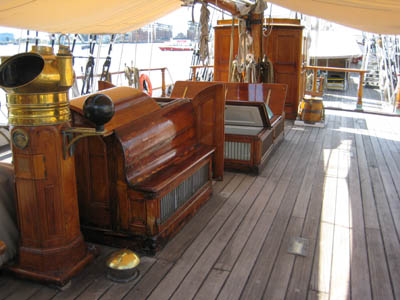 Same view, better lighting, plus the binnacle |
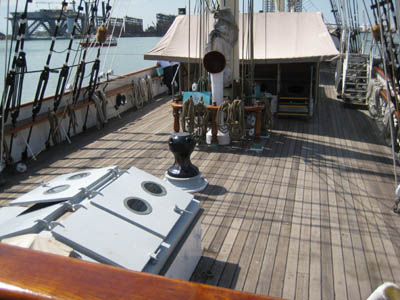 Center main sail fife rail & pumps pump out the bilge |
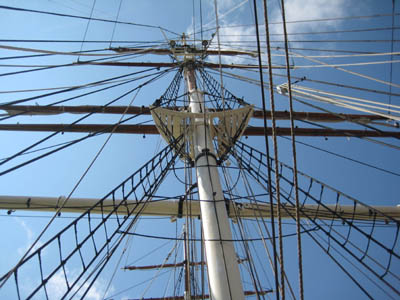 Look up at the main sail and its five yards (horizontal spars) that support the square sails |
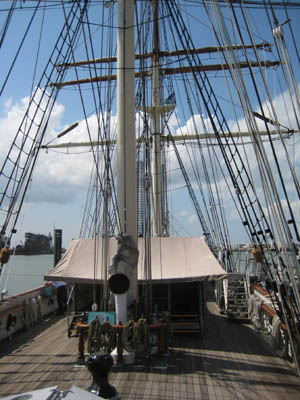 Descend down the main hatch beyond the main sail |
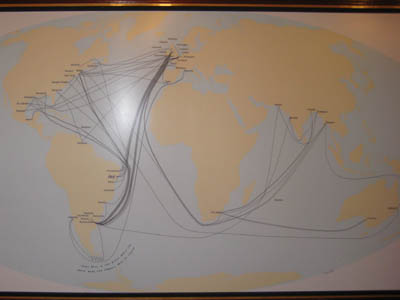 World map detailing Elissa's voyages |
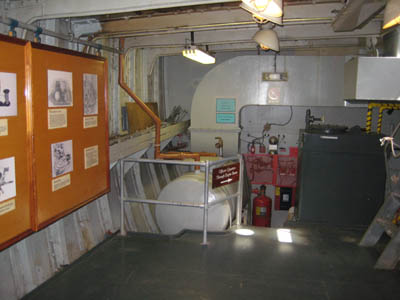 Depart the aft hold & head towards the stern |
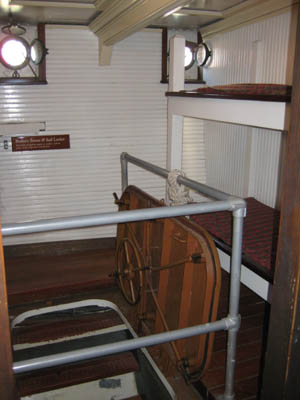 The sail locker now berths engineers while at sea |
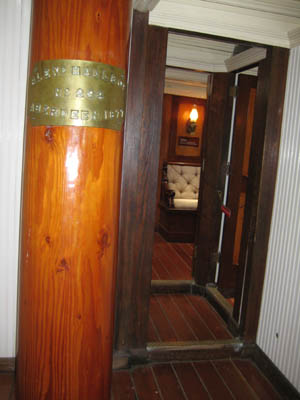 Pass the mizzen mast toward the mate's cabins |
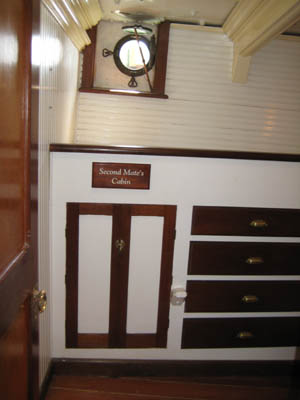 2nd mate's cabin has only one porthole |
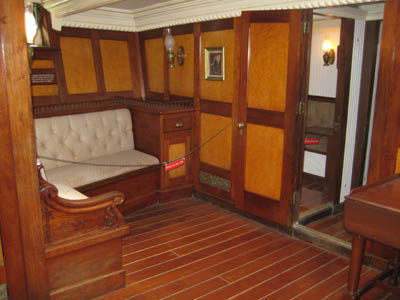 The captain entertained guests & conducted ship business in the saloon |
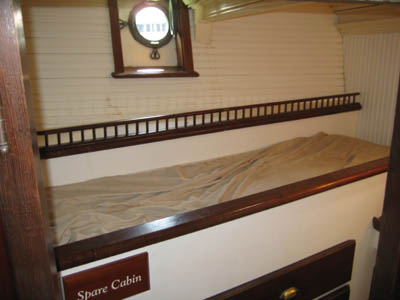 The spare cabin allowed a contractor a place to stay while traveling with their goods |
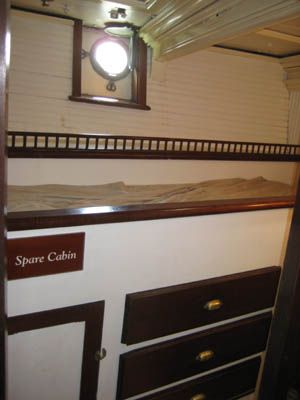 Tall shot to capture the storage underneath the bed |
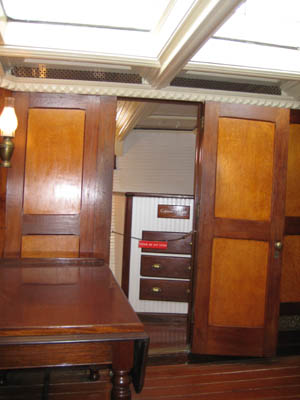 The captain's cabin is the largest & contains a bed for two (for when the 1st mate tags along) |
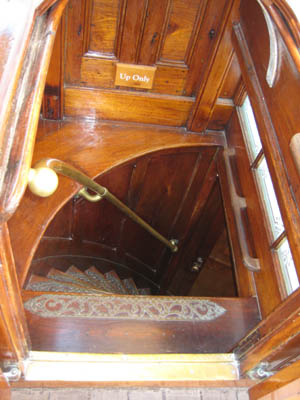 Captain's Companionway conserves space and deters mutiny (one at a time access) |
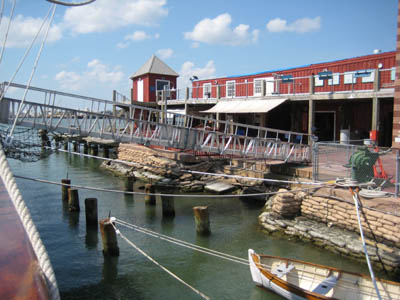 Back up top and head towards the exit gangplank |
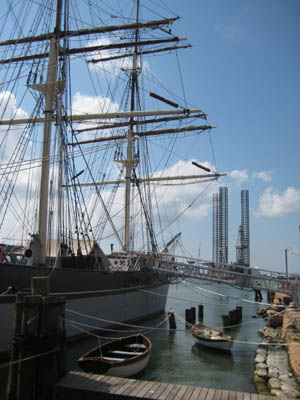 Back onshore and a view of rowboats & gangplank |
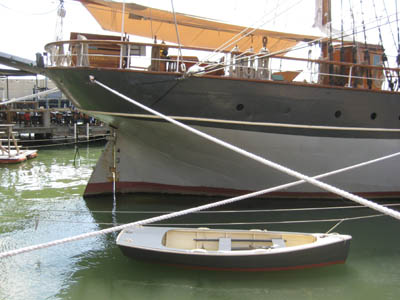 Stern shot from the closed Texas Seaport Museum |
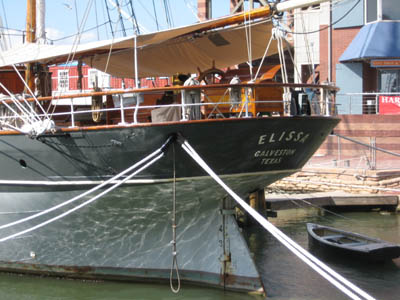 Better stern shot from Fisherman's Wharf |
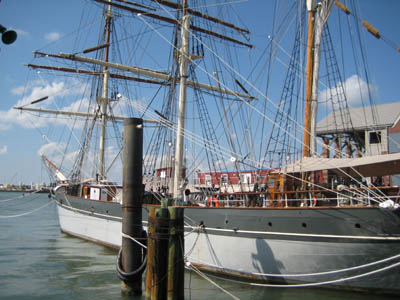 It is impossible to get a entire ship photograph . . . |
 . . . from either dock or Texas Seaport Museum |
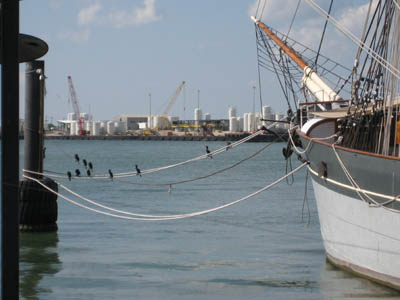 Seabirds rest and wait for the cruiseboat |
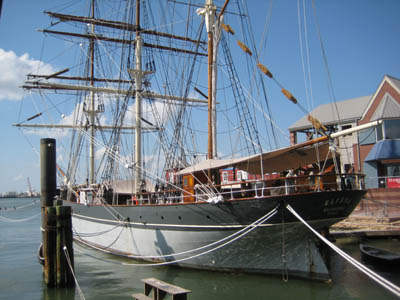 Almost capture the entire ship on this photo |
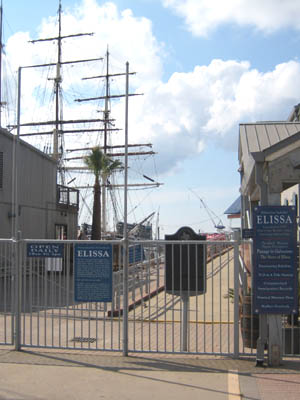 Depart the Elissa, see marker text below |
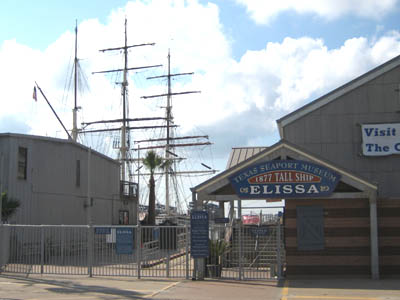 The Elissa weathered Hurricane Ike well but the Texas Seaport Museum was flooded with six plus feet of water |
Texas Historical Marker: Battle of Galveston, Located at: Pier 22, Erected: 1998
As part of the Union blockade of the Texas coast, Commander W. B. Renshaw led his small fleet into Galveston harbor to demand the surrender of this most important Texas port on October 4, 1862. Largely unguarded, as it was considered indefensible, the city surrendered after an exchange of gunfire. Major General J. B. Magruder was placed in charge of the Confederate forces in Texas after the loss of Galveston. He quickly organized a plan for the island's recapture. Improvising a navy, he refitted two steamers as gunboats by lining their hulls with cotton and manning them with cavalry. Foot soldiers were sent into Galveston in the darkness of early morning on January 1, 1863. Though the ground forces failed to seize the wharf, they engaged some of the Union ships as the makeshift Confederate fleet surprised the Union navy from behind. The rebel ship "Neptune" was sunk in shallow water. The Federal "Harriet Lane" was boarded by the steamer "Bayou City." Renshaw's flagship, the "Westfield," was destroyed in an explosion that killed the commander & several crewmen. Remaining Union ships fled Galveston Bay despite demands for surrender. Galveston remained under Confederate control for the duration of the war.